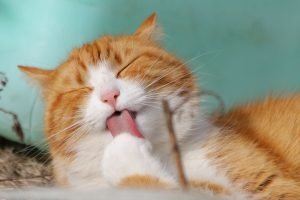
Filipinos love animals, but it is only recently when many of us are learning proper pet care. A lot of us had several pets in our childhood, but our idea of care only involved feeding them, bathing them, playing with them, and cuddling them.
Thankfully, with the resources on the Internet and reality shows like Jackson Galaxy’s, we’re learning more about our pets’ physiological and psychological needs. There is now more discussion in the Philippines about improving the overall health of our fur babies and animals in general.
One area we cat mums (and dads) find trouble with, however, is the lack of discussion and resources for cat nutrition. Personally, had I not worked with veterinarians, I would never have known that you’re not supposed to feed cats carbs. This baffled me as I had so many cats that happily ate rice. I also learned from them that some of the most popular cat foods cause kidney problems.
So before we go into the basics of reading cat food labels, let us first look into the cats’ dietary requirements.
Why Cats Require a Different Diet
Dogs are omnivores. Cats are obligate carnivores. This means that they are carnivores by necessity and cannot consume all the food that is OK for dogs. An ideal diet for them is to consume live prey.
Their bodies are not able to digest food the way dogs do. Their relatively shorter digestive tract makes it difficult for them to break down carbohydrate and starch. For cats, high carbohydrate intake could lead to problems, such as obesity and diabetes.
As animals who got vitamins and amino acids from the prey that they eat, their bodies are not able to create vitamins and fatty acids on their own. Cats get essential nutrients from their prey’s flesh, blood, and internal organs.
But of course, not all of us can feed our cats live prey or raw meat. So we have to be diligent in reading cat food labels to make sure that we’re giving them the next healthiest option available. The most important parts are the ingredient list and the guaranteed analysis.
Going through the Ingredient List
Reading the ingredient list helps you determine the quality of the food. You might just find out that you are paying for junk food with a big name.
Looking at the order of food in the list gives you an idea of which ingredient is the most abundant. If the first few products have corn meal or rice in it, you can put that food back on the shelf.
There are also ingredients that manufacturers try to sell off as desirable. Be wary of items that have “meal” or “by-products” in their name (e.g. fish meal, poultry by-product). These usually come from parts of animals such as bones, organs, or beaks. These meals and by-products are used by manufacturers to declare that their food has high protein content, but these are actually low-quality proteins.
Cross-checking the Ingredient List with the Guaranteed Analysis
The guaranteed analysis is like the nutrition fact found on human food labels. It states the minimum and maximum amount of the nutrients available in the food, such as protein, fat, and fiber.
Check the guaranteed analysis if the product meets your cat’s protein and fat requirement. Generally, the recommended protein and fat intake for a kitten is at 30% and 20%, respectively. For adult cats, the recommended percentage of protein and fat intake is at 25-30% and 15-20%.
It is important to cross check the guaranteed analysis with the ingredient list because as stated before, manufacturers can be vague with the source and quality of protein. If a product has high protein content, but only has meals and by-products, you are being cheated.
There’s so much more to learn about cat nutrition and choosing the right food for them. Experts themselves are continuously studying what is fit and not fit for domestic cats. What we can do to help our feline babies is to discuss what we’ve learned and share our sources.
How ‘bout you cat mum? What’s your take on cat nutrition? Got any tips on reading cat labels? We’d love to hear your thoughts.
